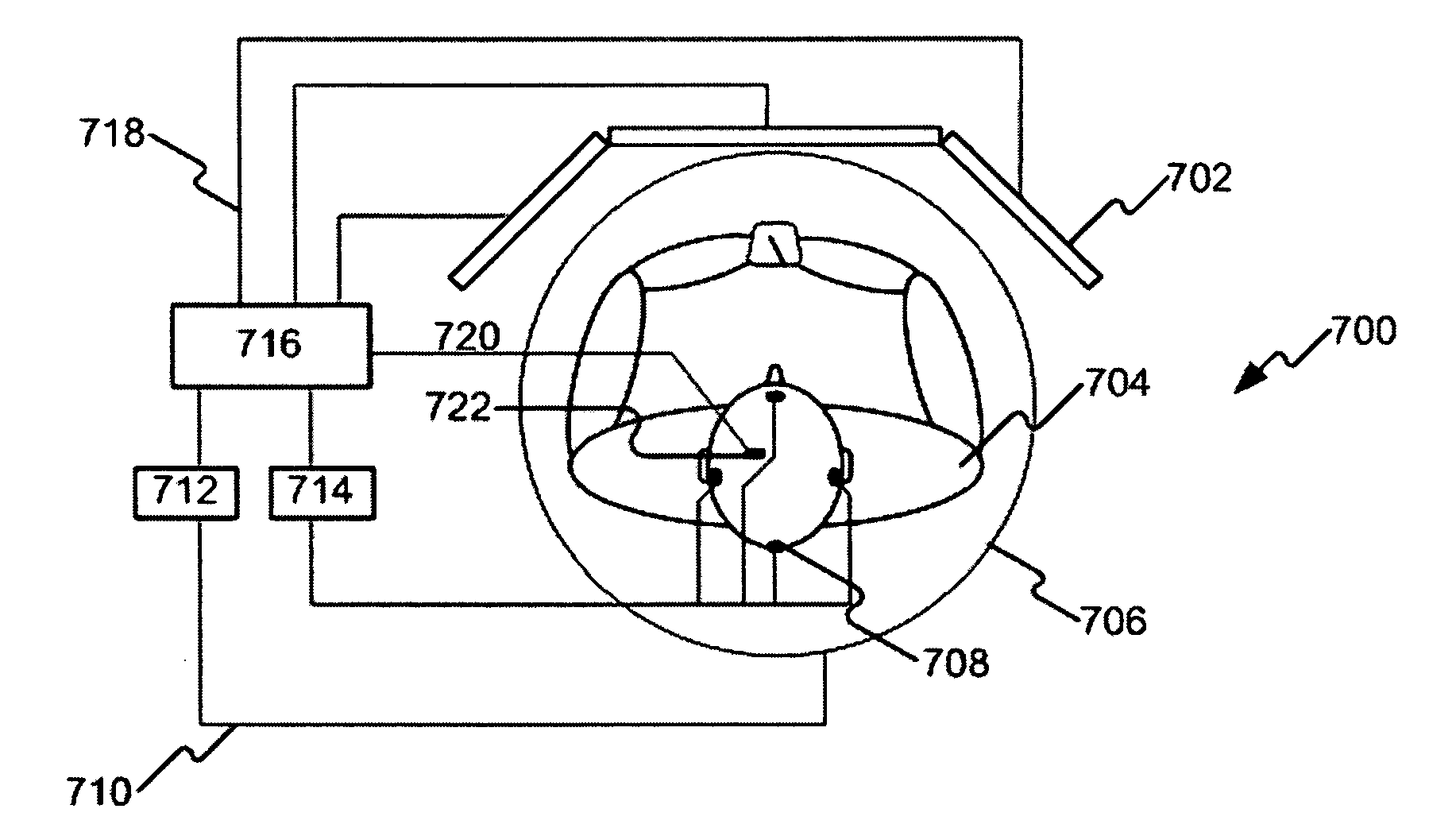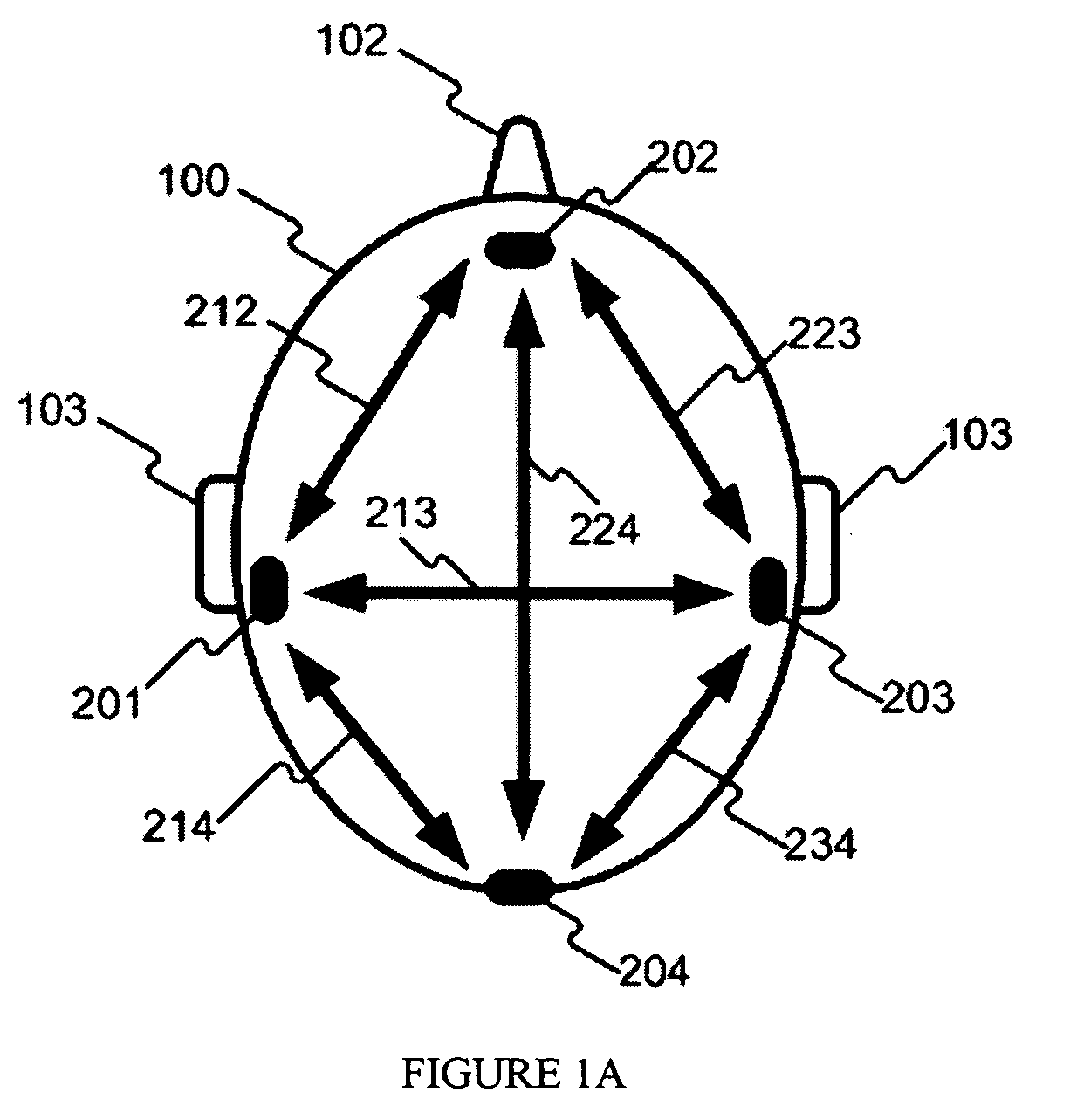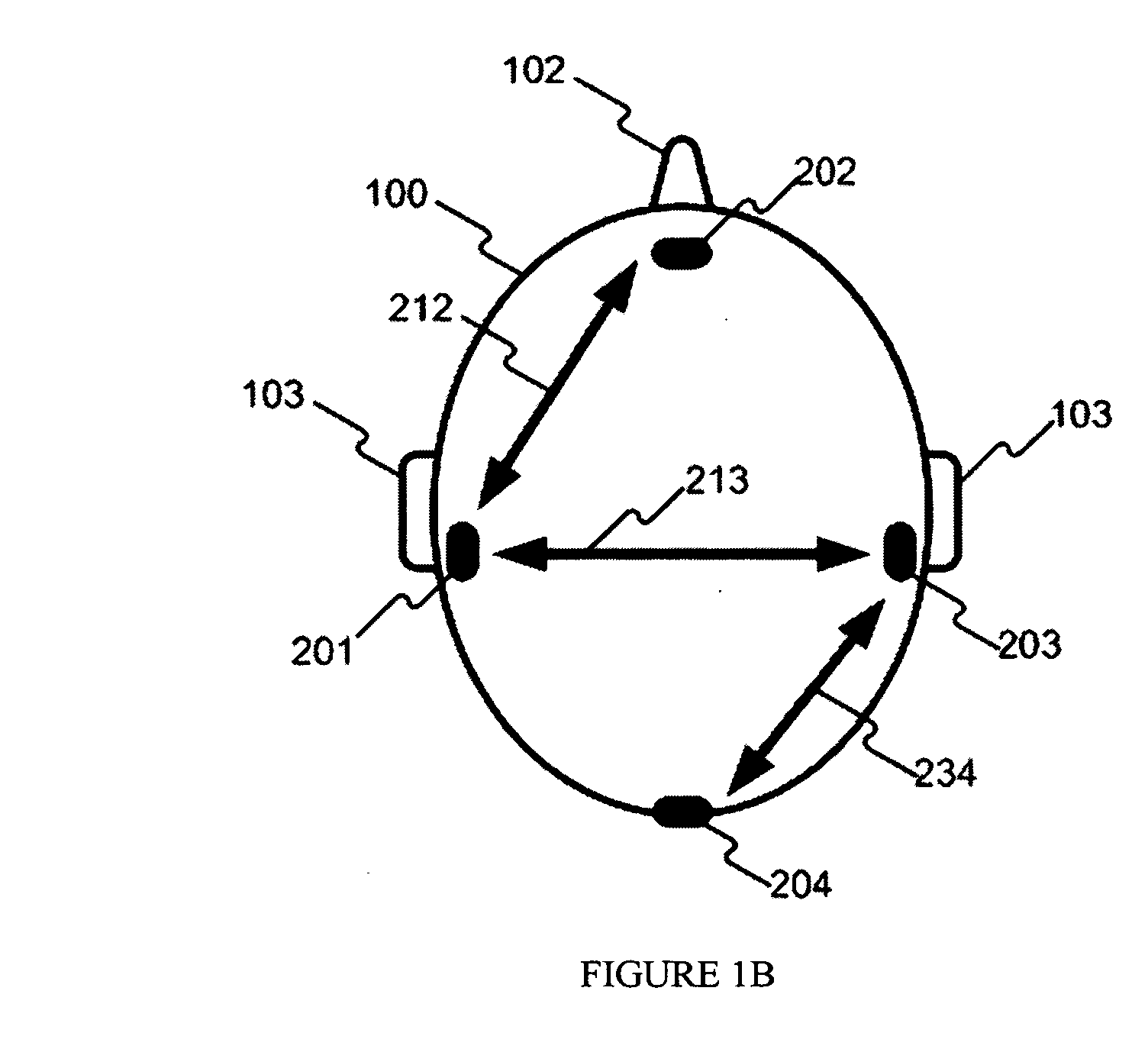Galvanic vestibular stimulation system and method of use for simulation, directional cueing, and alleviating motion-related sickness
- Summary
- Abstract
- Description
- Claims
- Application Information
AI Technical Summary
Benefits of technology
Problems solved by technology
Method used
Image
Examples
example 1
Enhancing Motion Perception Using Vestibular Stimulation
[0040]Electrodes were attached to the subject, as shown in FIGS. 2B and 2C. As shown in FIGS. 2A-C, electrodes may be placed along the sagittal and coronal planes (112 and 110 respectively). Placement along the sagittal and coronal planes allows for more accurate / precise inducement of perceived motion on a subject. Along the coronal plane line 111, one or more electrodes may be placed along the mastoid. Along the sagittal plane line 113, one or more electrodes may be placed on the centerline of the forehead or on the back of the neck. Electrodes may be positioned as follows: one electrode on left high mastoid 201, forehead 202, right high mastoid 203 and nape of neck 204. A grounding electrode (neutral) 205 may be positioned on the neck. The grounding electrode 205 is not active and is present as a safety precaution for absorbing any leftover current in a subject's head.
[0041]In a first test, a subject was seated in a rotary ch...
example 2
Stimulation Ramps
[0042]The stimulation methods described in this example may be based on near-DC values. Achieving the desired stimulation level can be accomplished in a number of ways, including with ramp-ups and ramp-downs. Table 2 summarizes example stimulation scripts tested. Data was collected from 7 subjects as described above, except that stimulations included different ramp-up or ramp-up and ramp-down times.
TABLE 2Ramp-upRamp-up and Ramp-downstimulationstimulationValues for ‘a’Values for ‘a’ and ‘c’ 0 ms 0 ms 25 ms 25 ms 75 ms 75 ms175 ms175 ms300 ms300 ms600 ms600 ms
FIG. 5 shows a typical response to the ramp stimulation protocol displayed in visual analog scales. FIG. 6 shows data for all 7 subjects (plots averaged recorded values from subjects' visual analog scales versus ramp-up times). This data indicates that the sensation at the skin decreased with longer ramp-up times with some variability between subjects.
example 3
Dose Response Tests
Data Collection
[0043]Subjects were seated in a rotary chair with electrode placement as indicated above. Current was applied simultaneously to positive and negative electrodes within each set, without visual input required, to induce a feeling of a desired rotation. To quantify the dose response in all three axes of rotation, each subject underwent thirty protocols lasting 20 seconds. The protocols utilized ten different combinations of electrode stimulation sets (Table 3) to quantify the dose response in all three axes of rotation. Prior to testing, the script order was randomized for each subject. Perception data was collected from each subject via an avatar program. Subjects were provided with a wireless joystick for reporting sensed motion. Data was collected from 21 subjects.
TABLE 3Test GroupTest GroupTest Group1: ±1.5 mA2: ±2.0 mA3: ±2.5 mAPerceivedScriptPositiveNegativeScriptPositiveNegativeScriptPositiveNegativeMotionNo.ElectrodeElectrodeNo.ElectrodeElectr...
PUM
 Login to View More
Login to View More Abstract
Description
Claims
Application Information
 Login to View More
Login to View More - R&D
- Intellectual Property
- Life Sciences
- Materials
- Tech Scout
- Unparalleled Data Quality
- Higher Quality Content
- 60% Fewer Hallucinations
Browse by: Latest US Patents, China's latest patents, Technical Efficacy Thesaurus, Application Domain, Technology Topic, Popular Technical Reports.
© 2025 PatSnap. All rights reserved.Legal|Privacy policy|Modern Slavery Act Transparency Statement|Sitemap|About US| Contact US: help@patsnap.com



